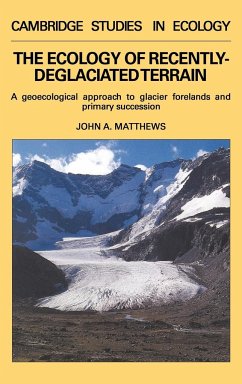Glacier forelands provide a unique type of field laboratory for the study of landscape ecology. Their restricted physical size and the relatively simple ecosystems which they support allow comprehensive investigations to be carried out, but their particular attraction is the existence of terrain of increasing age with increasing distance from a retreating glacier, allowing inference of ecological change over long time periods. This book provides the first comprehensive review of the available information on the ecology of recently-deglaciated terrain and evaluates critically the methodology currently employed in such studies. The theme developed is that the ecology of these regions can only be understood fully by giving due consideration to the role and interaction of both physical and biological processes in the development of the landscape. By adopting this geoecological approach, the spatial variation and dynamics of vegetation and soils are considered in relation to other aspects of the landscape such as topographic variation, climate and geomorphic processes. A geoecological model is thus outlined which provides both a framework for interpreting the varied ecological nature of glacier forelands found throughout the world, and also an agenda for future research.
Table of contents:
1. Introduction; 2. The nature of the timescale; 3. The physical landscape; 4. Soil development; 5. Plant succession: patterns and environmental factors; 6. Plant succession: processes and models; 7. The ecological significance of recently-deglaciated terrain.
The first comprehensive review of the available information on the ecology of recently-deglaciated terrain, this volume evaluates critically the methodology employed in such studies.
This book provides the first comprehensive review of the ecology of these fascinating regions and develops a model based on both physical and biological processes for interpreting their varied nature.
Table of contents:
1. Introduction; 2. The nature of the timescale; 3. The physical landscape; 4. Soil development; 5. Plant succession: patterns and environmental factors; 6. Plant succession: processes and models; 7. The ecological significance of recently-deglaciated terrain.
The first comprehensive review of the available information on the ecology of recently-deglaciated terrain, this volume evaluates critically the methodology employed in such studies.
This book provides the first comprehensive review of the ecology of these fascinating regions and develops a model based on both physical and biological processes for interpreting their varied nature.








